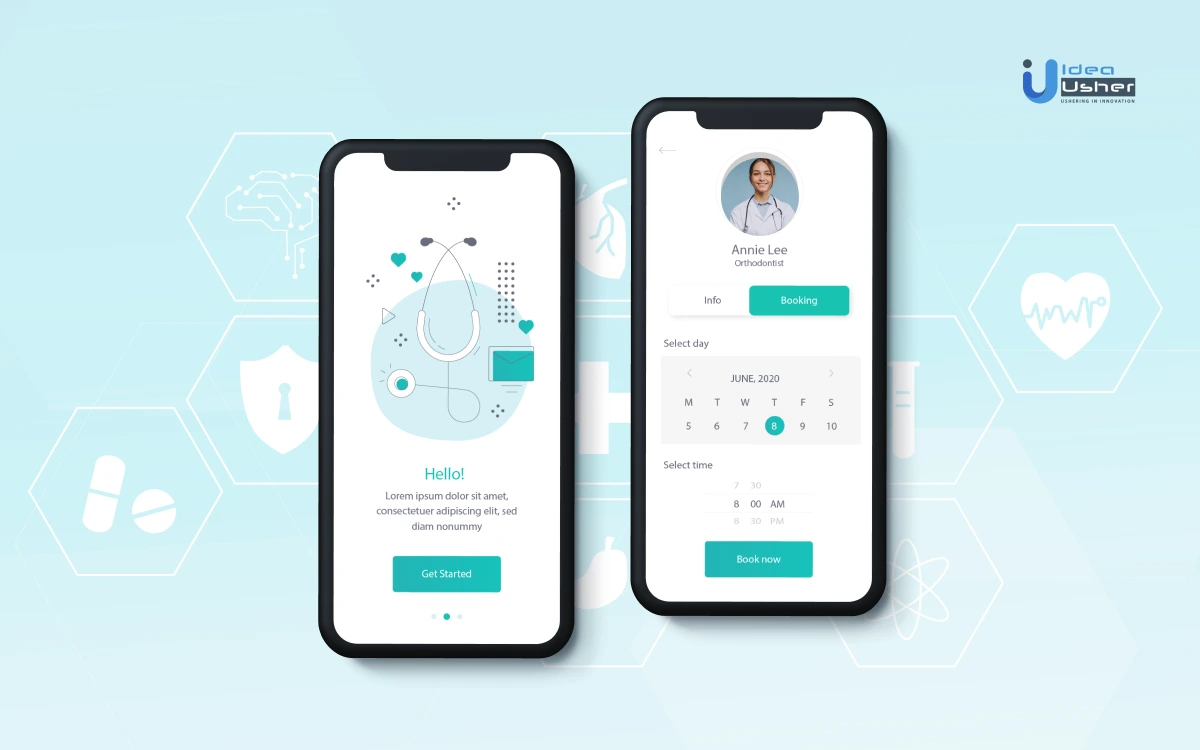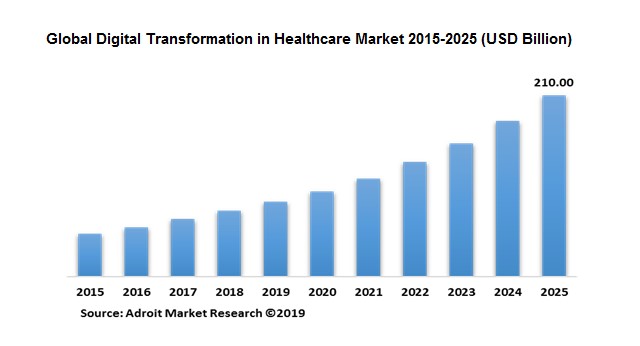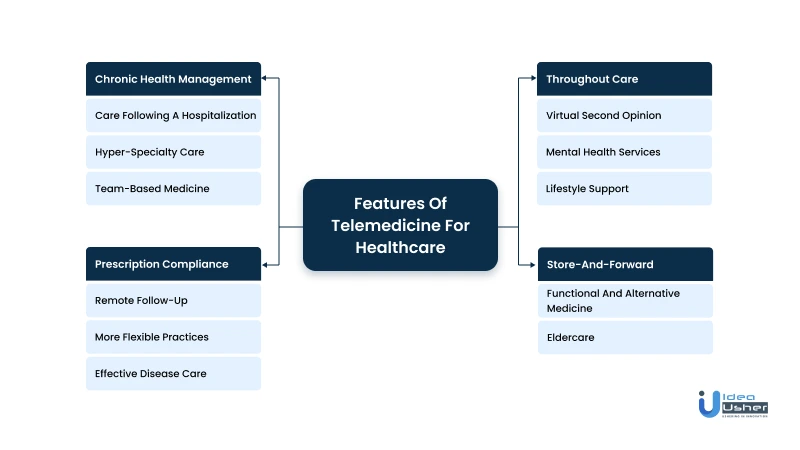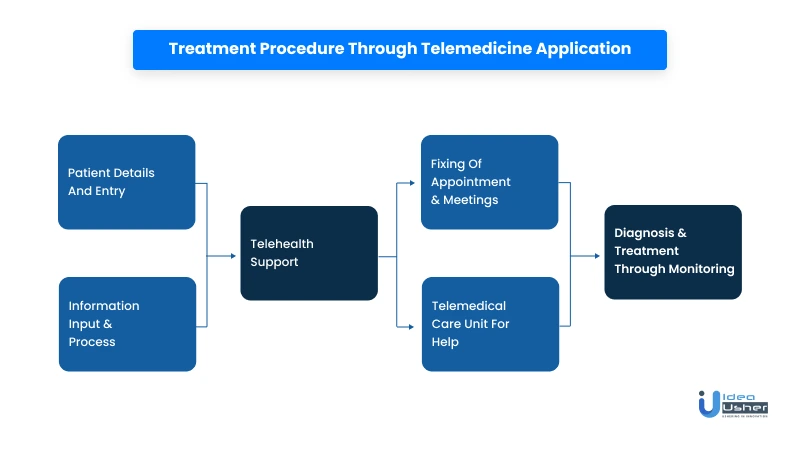- What Is Telemedicine?
- Types Of Telemedicine Apps You Can Develop
- 5 Must-Have Telemedicine App Features
- Development Stages Of A Telemedicine App
- Tech Stack For Telemedicine App Development Project
- Medical Compliances Needed For Telemedicine Apps
- Benefit Of Telemedicine App
- How Does Telemedicine Apps Make Money?
- Why The Development Of a Telemedicine App Is The Best Option At Present?
- WrapUp!
- FAQ

Telemedicine applications and telecommunications allow remote healthcare. From the early days of healthcare IT, several companies have provided custom and platform-based telemedicine app development and SaaS application development to hospitals, clinics, nursing homes, and other healthcare institutions. We’ll explain why telehealth applications are more popular than ever below. But you may now create a top-notch telehealth app to improve patient care and medical staff satisfaction and watch your business grow in your niche.
- What Is Telemedicine?
- Types Of Telemedicine Apps You Can Develop
- 5 Must-Have Telemedicine App Features
- Development Stages Of A Telemedicine App
- Tech Stack For Telemedicine App Development Project
- Medical Compliances Needed For Telemedicine Apps
- Benefit Of Telemedicine App
- How Does Telemedicine Apps Make Money?
- Why The Development Of a Telemedicine App Is The Best Option At Present?
- WrapUp!
- FAQ
What Is Telemedicine?
Telehealth has a broader and consumer-facing approach, whereas telemedicine is more focused on clinical use. The goal of telemedicine is to enhance health outcomes by increasing access to treatment and medical information via the use of information and communication technology. There were around 350,000 telemedicine patients worldwide in 2013. It was predicted that the number of telemedicine patients would increase by more than 20 times that amount, which turned out to be true.
Significant expansion has been seen in the telemedicine industry in recent years. In 2019, it was the estimation that the worldwide telemedicine market would be worth over USD 50 billion. Again, it was the anticipation that the market would increase substantially in the future, with a valuation of roughly 210 billion US dollars by the end of 2025 and 780 billion US dollars by 2030, expanding at a CAGR of 16%.

Types Of Telemedicine Apps You Can Develop
1. App For Management Of Chronic Illness
It can help treat patients with conditions like diabetes, COPD, cardiovascular diseases, etc., a telehealth app features:
- Regular online check-ups using audiovisual communication.
- Remote patient monitoring with biosensors measuring vitals or connected medical devices
- Health log with symptoms, vitals, and data analytics
- Notifications on medications
- Alerts on detected abnormalities or risks of complications
2. App For Primary Care
It can allow doctors to:
- Conduct virtual appointments.
- Prepare a plan of treatment, medicine,
- Track the progress of a patient
- Scheduling tests, consultations, and follow-ups on the results.
3. App For Acute Care
For situations like treating a stroke in a hospital or similar acute health condition, you can develop an app with the following features:
- Consultations in an emergency through videoconference.
- Easy-to-understand UI/UX for medical professionals.
- Integrations with other software for data access
- AI & VR-based advanced diagnostics features
4. App For Nursing Care
Nursing care delivery aided by telehealth applications includes pre-and post-operative care.
- Managing persistent illnesses.
- Mental health care.
- Assistance for the elderly
- Home care for elderly people.
- Pregnancy monitoring, etc.
5. App For Mental Health
There are several handy functions in the Telemental app:
- Online behavioral therapy sessions with an individual therapist or a small group.
- Evaluation of the patient’s state of mind.
- Real-time communication between doctors and patients, all the time.
- Support groups/Online chats for patients
- Prescription renewal/refilling notification and monitoring
Furthermore, you can also develop apps dedicated to physical therapy and rehabilitation, pediatrics, digital therapeutics, remote care for rural patients, stroke treatments, newborn care, neurology, chronic disease management, and more. Basically, you can create an app for all the medicinal fields to assist medical institutes in treating their patients more efficiently.
5 Must-Have Telemedicine App Features
1. User Profile
Identification of patients and healthcare providers is a crucial aspect of telemedicine apps. Patients need to have access to basic information about their healthcare provider, including their name, qualifications, physical address, and avatar. Similarly, doctors need to have access to their patients’ names, areas of residence, gender, contact information, and a photo of their faces.
To ensure a seamless experience, this feature should be prominently displayed at the top of the app screen. This will enable users to quickly and easily identify and communicate with their healthcare provider. It is also essential to ensure that the app provides a secure platform for communication between patients and doctors, with end-to-end encryption to protect sensitive patient data.
2. Medication Tracker
According to research conducted by the World Health Organization (WHO), about 50% of patients in developed countries fail to adhere to their treatment regimens. Therefore, including a medication tracker in your health app is essential. This feature not only allows doctors to prescribe medication but also sends reminders to patients to take their medicine. This way, doctors can monitor the patient’s recovery process and adjust the treatment plan accordingly.
A medication tracker is a great way to ensure that patients stick to their treatment regimens. By sending reminders, patients are less likely to forget to take their medicine, which could negatively impact their health. It also enables doctors to monitor the patient’s progress and make any necessary adjustments to the treatment plan.
3. Electronic Medical Records
Electronic medical records (EMRs) are an integral part of digital health, providing a detailed record of a patient’s medical history and communication with their doctors.
Some health apps use cloud technology to store and retrieve EMRs, making it easier for doctors to quickly access and review their patient’s medical history before a virtual clinical session. Therefore, when designing a health app, including an EMR section is crucial, where doctors can easily record, organize, and access their patient’s medical files.
Since patient information is sensitive and must be kept private, it is imperative to ensure that the app provides robust security features to protect the data from cyber threats. This includes end-to-end encryption and access control measures such as passwords, biometric authentication, or two-factor authentication.
4. Payment Options
Providing patients with the ability to pay for services they receive through your health app is essential. To achieve this, it’s important to incorporate an electronic payment system that offers convenience and security to users.
When selecting a payment system, ensure that it is up-to-date with the latest payment options and provides robust security measures to protect user data. You can also work with reputable e-payment companies to integrate their software into your app to ensure that the payment process is reliable and efficient.
5. Video, Audio & Text Capabilities
Effective communication is the backbone of telemedicine, and it’s vital to incorporate features in your telehealth application that ensure ease and efficiency of interactions between patients and healthcare providers.
To achieve this, your app should offer real-time communication options such as video calls, voice calls, and messaging. It’s also essential to ensure that the app provides high-quality audio and video, as well as stable connectivity to avoid interruptions during virtual clinical sessions.
Additionally, the app should enable users to easily schedule appointments and send notifications to remind them of upcoming appointments to avoid missed appointments.
Development Stages Of A Telemedicine App
You may establish your requirements and devise a budget for your telemedicine app. Followed by this, you can create an MVP and proceed toward the development stage. Let’s explore the steps in detail:
1. Discovery Phase
Market and competition analysis and articulating the app’s intended audience, outcomes, and capabilities are all essential pre-development tasks. Therefore, creating a document that includes the task scope is crucial.
In this stage, you will come across the following:
- Market analysis, competitor analysis, and consumer segmentation for a telemedicine app.
- Productizing an idea for a telehealth app.
- Information gathering for telehealth software development and specification.
- Creating user scenarios for patients, physicians, and administrators. Listing and ranking capabilities such as symptom-based doctor search and real-time video conferencing); dividing features into subscription tiers.
- Collecting information needed to ensure conformity with relevant laws and standards (such as HIPAA and HITECH).
- Initial HIPAA-compliant software architecture design, technology stack selection, and identification of required software licensing.
- Design of high-level integrations with systems like EHR, Health Information Exchange, and Laboratory Information Systems.
- Planning the project’s scope, timetable, iterations, milestones, and key performance indicators (KPIs). Along with this, deciding on the software development life cycle (SDLC), for example, Agile approaches like Scrum and Kanban, are appropriate for complicated projects needing team flexibility.
- Assessing risks during software development and creating safeguards against them. For instance, covering risks such as delays in the development, third-party medical software integration issues, etc.
- At this phase, you may evaluate the risks associated with telemedicine application usage (such as app abuse and patient health) and develop preventative measures.
- You can plan a digital interface prototype that will demonstrate the framework for the application you want to create.
- Last but not least, a rough financial plan.
2. Development Of MVP
If you don’t develop the minimum viable product (MVP) with careful consideration for future iterations, adding a feature may be a complex process with significant financial consequences. Therefore, it is essential to list all necessary features and functions, no matter how basic or complex they may be.
The biggest challenge is ensuring all the components of a telemedicine application work smoothly. The live video chat feature is an obvious must-have for any telemedicine application. In addition, it is essential to develop a safe, intuitive, and widely accessible system.
Create a list of all the must-have functions for your telemedicine app which are mandatory components of the application. The following are required components and technical solutions that should be present in your MVP:
2.1. Database Design
The development of telemedicine apps involves a massive need for data storage. Everything related to a patient’s care, from prescriptions to reports to medical records, is kept in a database. Consequently, a reliable database platform can meet this requirement.
2.2. Security Module
Meeting the security standards of healthcare regulators is the largest hurdle for a development team working on a telemedicine application. Different encryption technologies, such as Laravel Encryption, may be used to guarantee the app’s HIPAA and GDPR compliance and the safety of patient data.
2.3. High Load User Flow
It’s possible for the app to crash on the server if too many people try to use it at once. That’s why it’s crucial to plan ahead for this issue and keep the database running smoothly with the help of automated scaling solutions.
2.4. Secure Video Calling
You may think of this as the app’s main feature. HIPAA-compliant video conferencing and messaging services allow for real-time, encrypted communication between patients and healthcare practitioners. Signs of sickness are much easier to spot when there is a visual interaction provision; for that, a high-quality, low-latency video is essential.
2.5. Peer-to-Peer Chat
In order to effectively communicate before, during, and after a call, providers and patients need the capacity to send and receive rich communications. This is a helpful resource for doctors and nurses who need to leave written instructions or get in touch with patients when they are unavailable to do so by phone. In addition, patients can write down any information that may be difficult to convey over the phone owing to a lack of clarity in pronunciation or a disruption in network access.
2.6. Appointment Scheduling
Making it easier for patients to schedule appointments with their preferred doctors by providing them with an online appointment booking or patient scheduling tool.
2.7. Connectivity To Electronic Health Records
Any healthcare facility would benefit significantly from having an accurate patient history. Medical staff can save a lot of time if they can sync patient information gathered during a consultation directly to an EHR system.
2.8. E-prescriptions
In order to speed up the medication-prescribing procedure, a telehealth app may include an e-prescription feature.
2.9. Module For Medical Assistants
Modern telehealth apps sometimes provide a distinct user interface (UI) for nurses and other medical assistants who may join the conversation to update patient information, take notes, and perform any number of additional tasks that physicians might do without.
3. Development Of User Panels
The telemedicine application has three panels of the app, and all of them have different features according to their requirements.

Listed below are given the most crucial features of the telemedicine app:
| Features for the Patients | Features for the Doctors | Features for the Admin |
| User profile for registration | Doctor profile for registration and specialization information | Personal profiles management to track data, control specific features and level of access |
| Geolocation for locating hospitals and medical facilities | Feature for checking and managing appointments | Doctor profiles management to keep track of physicians’ previous records and block in the case of a fraudster or breach of regulation. |
| Medical Records for maintaining health data | Scheduling availability | Patient Profiles management to track medical records, financial history, activity, etc. |
| Communication ways to connect with doctors through in-app chat/calls, video sessions | Patient medical records and prescriptions | Analytics to track the performance of application usage and sales records |
| Doctor reviews and Patients feedback to find a specialist | Communication ways to connect with patients through in-app chat/calls, video sessions | Notifications management for providing updates regarding policy, promotional offers, schedule changes, etc., to patients and doctors. |
| Payment gateways for secure fees transaction | Payment gateways for receiving patient fees through secure transaction | Electronic health records system integration to check recent updates in patient medical data |
From a design perspective, you can focus on providing features at a glance, human-centric design, and user-friendly navigation for the patient’s panel. Similarly, for the doctors and admin, you can focus on creating a dashboard providing access to the features for easy navigation.

Tech Stack For Telemedicine App Development Project
The technological stack is essential in developing the app’s one-of-a-kind feel, layout, and features. This way, experts may evaluate it objectively and select it accordingly. The technology stack for telemedicine or healthcare app development includes programming languages, databases, frameworks, API, and backend and front-end tools. The range of potentially valuable technologies is, in reality, infinite.
Some popular technology used for healthcare innovation is as mentioned below:
- Because of its real-time connection and numerous forwarding options, WebRTC is an excellent tool for creating healthcare apps.
- The PHP framework in the app’s backend ensures its reliable and efficient functioning. The PHP framework Laravel provides a dedicated setting for software development. Automatic procedures like sessions, authentication, and caching are supplied as ready-to-use integrations. Notable alternatives include Node.js, Nest.js, and Express.
- With the proper front-end framework, you can use whatever technology you choose while making your app. The technology to be used is based on the needs of the project and its scope. However, popular front-end frameworks include Vue.js, Next.js, and Angular.js.
- PostgreSQL, Hbase, MongoDB, and Cassandra are examples of databases that can be used, although they are not the only options.
- Cloud services like GoogleCloud or AWS, third-party technologies, and tools like geolocation, cloud-based messaging, flexible search, and many more are all crucial considerations when deciding on the technology stack.
- Telemedicine app developers may use the SSL protocols for data exchange from the app to a database that keeps the data secure from hackers.
- You can implement payment gateways like PayPal and Stripe or both based on particular requirements for a product.
Medical Compliances Needed For Telemedicine Apps
The telemedicine app development process includes phases like planning, designing, development, and launch. Likewise, it demands a team of developers, designers, analysts, etc. Similarly, the telemedicine app requires regulatory consultants to update the app with all the medical compliances.
It is essential to incorporate some medical compliance in Telemedicine Apps:
1. HIPAA
It is mandatory if your app will gather, store and share patient information. As a developer, you can make use of secure login information and eliminate the risk of a data breach and unauthenticated sharing.
2. Integrated With EPA (Electronic Prior Authorization)
Digitization of paper-based data collection is the primary goal of EPA software. There are some features of the EPA:
- Details about the service provider
- Date and place where the service was rendered
- Beginning and ending time of service
- The nature of medical care provided
3. Health Level: HL7 Standards
It must be adhered to by the doctor on demand since it helps in the exchange, retrieval, and sharing of data between medical apps. Integration of HL7 Standard makes the process convenient and flexible. It is necessary to make the application more viable.
4. Certified With EPCS
EPCS, or electronic prescription for controlled substances, improves provider workflow, helps patients, and provides medication safety. EPCS adoption demand is higher among healthcare professionals who share, receive, or integrate patient information from outside their organization.
5. FDA Policy For Mobile Medical Application
It is a mandatory certification for the mobile application that aids in the treatment, mitigation, or even identification of health issues. FDA assesses the type of medical app developed, automates easy chores of healthcare professionals, and exercises enforcement discretion in cases where a feature of the application allows patients to self-manage their disease.
6. Electronically Protected Health Information (ePHI)
The Health Insurance Portability and Accountability Act of 1996 (HIPAA) Security Rule governs ePHI administration. Whoever deals with ePHI is acknowledged as a covered entity in HIPAA documents.
Apart from the compliances mentioned above, it is crucial and mandatory to include other medical compliances like HITECH Act meaningful use stages 1 & 2, EHR and ICD-10, and Health and Human Service (HHS) guidelines.
Benefit Of Telemedicine App
- Comfort and convenience in medical supervision and consultancy
- Control of infectious illness at the earliest
- Telemedicine makes it easy to connect with a doctor or nurse practitioner with one tap.
- Incredibly quick and simple access to first-rate medical care.
- The elderly and the chronically ill no longer need to risk a long journey to see a doctor.
- It facilitates real-time communication between doctors and their patients by enabling remote examinations.
- Since doctors and nurses can check up on patients whenever they want, this facilitates RPM.
- Costs associated with healthcare are reduced since fewer hospitalizations and subsequent readmissions are required.
How Does Telemedicine Apps Make Money?
Additional revenue streams for your telemedicine app include:
1. Subscription Model
Monthly or yearly subscriptions are a common revenue model for telemedicine apps. The patient and the doctor must pay a fee to access the application. You may incentivize membership signups by offering annual or quarterly payment plans with special rates. This smart move will attract more people to use your app.
2. Advertisement Model
You may make a lot of money from your application by including adverts. Many businesses want to display their adverts to a sizable audience on popular websites. They’ll fork out some serious cash in exchange for your services. However, losing users because of too many ads is a certain way to ruin a business. In order to earn money, a telemedicine app needs an effective and scalable advertising model, which the business development team must create.
3. Reference Model
Referrals are another source of revenue for telemedicine apps. This strategy may not provide immediate profits, but it has the potential to be very lucrative down the road. You should expect an increase in users and doctors interested in contributing to your app as word spreads about your product’s success. A cost is associated with referring a new user, whether a patient or a doctor, to the app.
4. Franchising Model
You may expand your app’s revenue potential by franchising it in other countries or locations. Well-known telemedicine app SkyHealth does the same function, and they sell their franchise to the companies for around $3,000 or more.
Why The Development Of a Telemedicine App Is The Best Option At Present?
At this time, especially after the pandemic, conditions are ideal for a telemedicine company to launch. Investing now is a great chance, given global and market developments. The increasing interest in creating a telemedicine app can be attributed to two leading causes.
1. Pandemic: A Primary Contributing Factor
The first incentive to invest in creating a telemedicine app is the potential for widespread behavioral changes in the event of a pandemic.
- The number of people using telemedicine to get healthcare grew by a factor of 100 during the COVID outbreak.
- Statista reports that between 60% and 75% of individuals in the United States would utilize a telemedicine app.
- Seventy percent of customers are completely satisfied with TM services. As far as they can tell, they will be using these again.
2. The Venture Investments
Statistics show that the market for creating telemedicine apps is booming. The reason for this is the massive amount of venture money flowing into the industry. The reason behind this is the result of the enormous profit potential presented by the changing attitudes and practices of healthcare consumers.
- The telemedicine market might be worth $175.9 billion by 2026.
- Data Breach market research has projected a CAGR of 22.67% for the telehealth industry.
- Recent studies have found that 83% of healthcare organizations want to invest in telehealth, and 84% are confident in their ability to increase their coverage.
WrapUp!
Consequently, now is the moment to engage a healthcare app development firm if you’re looking to make an investment in the most promising business. The present crisis has highlighted the importance of healthcare application development and telehealth sector developments. The billion-dollar industry has room to expand into a $780 billion industry by 2025. Trusting Idea Usher as a healthcare mobile app development firm is like sowing a field with success seeds that have already been planted.
Get in touch with us now!
Contact Idea Usher at [email protected]
Or reach out at: (+1)732 962 4560, (+91)859 140 7140
FAQ
Q. What is the reason for building a telemedicine app?
A. With the aid of telemedicine software development, patients may consult with a healthcare professional and receive treatment as a direct result of the consultation while also giving providers the ability to improve relationships with patients and attract new ones.
Q. What role does telemedicine play in the future of healthcare?
A. Telemedicine apps help make it easier for patients and doctors to talk about how to best avoid, diagnose, and treat a health problem. Some people in outlying places may find it a convenient means of access. It allows for more rational choice-making to occur.
Q. How can telemedicine applications monetize their services?
A. Monthly or yearly subscriptions are a common revenue model for telemedicine apps. Both the patient and the doctor must pay a fee to access the program. You may incentivize membership signups by offering annual or quarterly payment plans with special rates.
Q. What’s the future of telemedicine?
A. According to Statista, by 2025, the North American telemedicine industry is expected to be worth $35 billion, making it the largest in the world. By 2026, the worldwide healthcare industry is expected to have ballooned to a value of over $175 billion.








Rebecca Lal